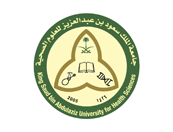Abstract
Purpose. Master’s students complete a major project as a mandatory component of their programme and many conduct Quality Improvement (QI) projects. Publishing student work enables knowledge sharing and may be helpful for career progression, however there is limited literature on the publication potential of Master’s students’ work. This study aimed to investigate whether there is a difference in the study size, approach and quality of the reporting in student produced and equivalent published QI activities.
Method. Ten student and ten published articles were identified for analysis. Each paper was quality appraised and data pertaining to the size and scope of the projects were extracted, including approach to data collection, number of quality cycles performed, number of sites studied, and study outcome. Descriptive and inferential statistical analysis was conducted to explore the comparative performance of the two bodies of work.
Results. Compared to student work, published work was characterised by larger sample size (n=744 vs 171.6), longer duration of data collection (12.75 vs 4.83 months) , more prospective designs and more studies that involved introducing a new intervention than student work. No differences were identified between quality appraisal scores between the two bodies of work (p=.24), apart from in studies that included a new intervention, in which published work performed better than student work (81.80% vs 65.50% for achievement of quality appraisal domains). All published studies demonstrated positive findings, compared to just half of student work.
Conclusion. Published and student QI work appear to differ in terms of scale and quality, however there are many encouraging factors for consideration for students wishing to disseminate their QI projects. Supporting the process of preparation for publication is an important learning experience. Practical approaches to improve the scope and quality of student projects are identified.
Recommended Citation
Evans, Catherine; Chen, Yen-Fu; Chouhan, Gurpreet; and Hammond, Lucy
(2022)
"Publishing audit and service evaluations: comparing student work and the published literature,"
Health Professions Education: Vol. 8:
Iss.
2, Article 4.
DOI: 10.55890/2452-3011.1023
Available at:
https://hpe.researchcommons.org/journal/vol8/iss2/4



